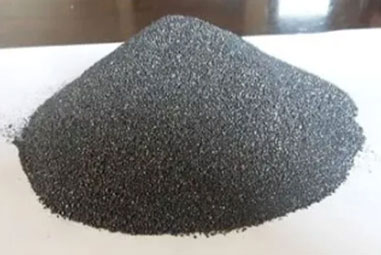
High titanium slag is a valuable raw material for manufacturing various materials such as refractory products, chemicals, and equipment, as well as enhancing the performance and longevity of industrial processes. This is because of the slag’s ability to resist corrosion and react with a variety of gases and chemicals. Titanium slag is also an essential component of petroleum refining, helping to improve efficiency and safety in the extraction and processing of oil.
This slag can be used to develop materials that are highly durable, ductile, and resistant to extreme temperatures. It is also useful in the production of chemical compounds, such as calcium carbonate, alumina, and silica. Additionally, it is a key ingredient in the production of steels and alloys, including titanium carbide and zirconium.
In addition, the slag can be used to develop materials for medical applications, such as dental implants and equipment. This is because the slag is highly resistant to corrosion and can be used in conjunction with other materials to produce implants, equipment, and even medical bolts. Furthermore, the slag can be used to create high-performance alloys and catalysts, such as titanium dioxide, titanium evaporator, and zirconium evaporator.
The process of upgrading high titanium slag involves the use of aluminothermic reduction to transform the titanium oxide into rutile, which is the primary material for producing titanium dioxide. The high titanium slag can then be leached using hydrochloric acid to remove impurities and produce titanium-rich product. The resulting slag can be used to manufacture titanium-rich iron alloys or used as a substitute for limestone in blast furnaces.
Fouad and Bian [52] upgraded low titanium slag by pressure roasting to obtain kennedyite, rutile phases, and free silica (SiO2). The removal rates of titanium, aluminum, and magnesium were 80%, 82%, and 59%, respectively.
In addition to analyzing the slag using X-ray diffraction, Raman spectroscopy was used to identify the presence of Ti-O bonds. The high polarizability of titanium dioxide mineral results in high Raman shifts, which are useful for detecting the existence of these bonds. The results indicate that the slag contains two perovskites: Q0 and Q1, both of which are derived from Si-O bonds.
The high titanium slag was also subjected to hydrochloric acid leaching to determine the effects of additives on its mineralogy and hydraulic activity. The slag was treated with different additives, including phenol and resorcinol. The results indicated that resorcinol was the most effective additive, promoting the dissolution of tungsten and titanium in the solution and improving its hydraulic activity. This suggests that resorcinol is a promising additive for promoting the hydrochloric acid leaching of high titanium slag. However, further research is required to determine the exact mechanism by which this additive works. The microstructure of the glass phase was also examined, as it is believed that the low hydraulic activity of slow-cooled high titanium slag is caused by the fact that it has a lower content of the glass phase than blast furnace slag. This may be due to the presence of stable forms of TiO4-monomers, chain or sheet units O-Ti-O, and a small amount of 6-coordination Ti4+ in the glass phase, which inhibits the formation of hydration inert minerals.